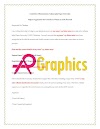Geometric Tools
List of all Geometry box Tools
There are many different types of geometric tools, some of which are used for measuring or drawing geometric figures, while others are used for construction or calculation. Here is a list of some of the most common geometric tools:
Ruler
Ruler a straightedge used for measuring distance or drawing straight lines. A ruler is one of the most basic and commonly used geometric tools. It is a straightedge with marked intervals along its length, used for measuring distance or drawing straight lines.
Rulers come in various sizes and shapes, including straight, flexible, or curved. The most common rulers are made of plastic, metal, or wood, and have markings in either inches or centimeters, or both. They may also have additional markings, such as fractions or angles, depending on their specific use.
Rulers are commonly used in geometry to measure the length, width, or height of geometric figures, such as lines, angles, triangles, rectangles, and other polygons. They are also used for drawing straight lines, either by aligning the edge of the ruler with a line or by using the ruler as a guide for a drawing instrument, such as a pencil or pen.
In addition to geometry, rulers are used in various other fields, such as engineering, architecture, graphic design, and carpentry. They are essential tools for accurate and precise measurements and are a fundamental part of any geometric or technical drawing.
Compass
Compass a tool used for drawing circles or arcs. A compass is a geometric tool that is used to draw circles or arcs. It consists of two arms, one with a pointed end and the other with a pencil or pen holder. The arms are connected by a hinge and can be adjusted to the desired radius or distance between the center point and the edge of the circle.
To use a compass, the pointed end of one arm is placed at the center point of the circle, and the other arm is rotated around it to draw the circle. Alternatively, if the compass is used to draw an arc, the pointed end is placed at one end of the desired arc, and the other arm is rotated to draw the arc.
Compasses are used in many different applications, including mathematics, geometry, engineering, and art. In mathematics and geometry, they are used to construct and measure circles and other curved shapes. In engineering, they are used to draw accurate curves and arcs for design and construction. In art, they are used to create precise curves and arcs for illustration and design.
There are many different types of compasses available, including traditional compasses with metal arms and hinge joints, as well as modern compasses with plastic or acrylic arms and a variety of other features. Some compasses also include additional attachments, such as extensions for drawing larger circles or curved rulers for drawing precise arcs.
Protractor
Protractor a tool used for measuring angles. A protractor is a geometric tool used to measure angles. It consists of a flat, usually transparent, circular or semicircular plate with degree markings around the circumference. The center of the protractor is a point where two arms, called the base and the rotating arm, meet.
To use a protractor, you first place the base of the protractor along one side of the angle you want to measure. Then you rotate the rotating arm until it lines up with the other side of the angle. The degree measurement where the rotating arm intersects with the degree markings on the protractor is the measure of the angle.
Protractors can measure angles from 0 to 180 degrees, both acute and obtuse. Protractors come in different sizes and types, including plastic, metal, or digital versions. They are commonly used in mathematics, engineering, and drafting to measure or draw angles.
Set square
Set square a tool with two arms of different lengths, used for drawing angles or lines at a specific angle. A set square is a type of geometric tool used for drawing or measuring angles. It consists of a flat, triangular piece of plastic or metal with two arms of different lengths. The longer arm is called the hypotenuse and the shorter arms are the legs.
The most common types of set squares are 30-60-90 degree and 45-45-90 degree set squares. These are named after the angles that are formed by the sides of the set square. The 30-60-90 set square has angles of 30 degrees, 60 degrees, and 90 degrees, while the 45-45-90 set square has angles of 45 degrees, 45 degrees, and 90 degrees.
Set squares are used in a variety of applications, such as drawing parallel or perpendicular lines, drawing triangles, or measuring angles. To use a set square, you align one of the legs with the edge of your paper or drawing surface and then draw a line along the other leg. The hypotenuse can be used to draw angles, measure distances, or to align the set square with other lines or angles on your drawing.
Set squares are commonly used in drafting, technical drawing, and architecture, but they can also be useful for drawing and measuring angles in other types of artwork or design.
T-square
T-square a tool used for drawing straight lines at right angles to a straight edge. A T-square is a tool commonly used in geometry and drafting to draw straight lines at right angles to a straight edge, such as the edge of a drafting table. It consists of a long, thin blade or rule, usually made of wood, plastic, or metal, and a shorter perpendicular shaft, called the head or stock, attached to the blade at one end. The head can be slid up and down the blade to adjust the position of the T-square, allowing it to be used to draw lines of different lengths.
To use a T-square, the head is placed against the edge of the drawing board or table, and the blade is used as a guide for a pen or pencil to draw a straight line. The T-square can also be used to create right angles by aligning the blade with a previously drawn line and then drawing a line with the head at the end of the blade.
T-squares are a versatile tool and are commonly used in a wide range of applications, including architecture, engineering, technical drawing, and graphic design. They are available in a variety of sizes and materials, and can be used in combination with other drafting tools, such as compasses, protractors, and rulers, to create accurate and precise geometric designs.
French curve
French curve a template used for drawing smooth curves. A French curve is a geometric tool used in drafting and drawing to create smooth, irregular curves. It is a plastic or wooden template that has a variety of curved edges of different sizes and shapes. French curves are used to draw curves that are difficult to create freehand, such as curves that have both concave and convex sections.
To use a French curve, the drafter places the template on the drawing surface and moves it until the desired curve is created. The curve can then be traced or drawn freehand along the edge of the template.
French curves are commonly used in architecture, engineering, and product design, among other fields. They are particularly useful for creating aesthetically pleasing curves on product designs, such as automotive bodies, furniture, or consumer electronics. French curves can be found in many different sizes and shapes, and they are often sold in sets that include multiple templates for creating different types of curves.
Drafting compass
Drafting compass a precision compass used for drawing circles or arcs with exact dimensions. A drafting compass, also known as a precision compass, is a tool used for drawing circles or arcs with exact dimensions. It is commonly used in technical drawing, engineering, architecture, and mathematics.
A drafting compass typically consists of two arms, one with a pointed end for piercing the paper or other material, and the other with a pencil or pen attachment for drawing. The arms are connected by a pivot joint that allows them to be adjusted to different radii or angles.
To use a drafting compass, the pointed end is placed at the center of the circle or arc to be drawn, and the pencil or pen is moved around the pivot joint to trace the shape. The compass can be adjusted to create circles or arcs of different sizes, or to draw arcs with a specific radius.
Drafting compasses come in a variety of sizes and styles, ranging from small hand-held models to large floor-standing units. They may also include additional features such as rulers, protractors, and other measuring tools.
Overall, the drafting compass is a versatile and essential tool for anyone who needs to draw precise circles or arcs in their work.
Vernier caliper
Vernier caliper a precision tool used for measuring small distances or diameters. A Vernier caliper is a precise measuring tool commonly used in engineering and manufacturing to measure the internal and external dimensions of objects, as well as depth and step measurements. It consists of two arms, one with a fixed jaw and the other with a sliding jaw, which can be moved along a calibrated scale that is etched on the main arm. The sliding jaw is connected to a Vernier scale that is used to read the measurement with higher precision than is possible with a regular.
Angle gauge
Angle gauge a tool used for measuring angles. An angle gauge is a tool used in geometry for measuring angles between two lines or surfaces. It is typically a protractor-like device that can be placed on the lines or surfaces to be measured, and the angle can be read off from a scale on the device.
In geometric tools, an angle gauge may refer to a specific tool or device used for measuring angles. For example, in machinist tools, an angle gauge is a device used to set the angle of a tool or workpiece in relation to a reference surface. In woodworking tools, an angle gauge is used to set the angle of a saw blade or router bit.
In general, an angle gauge is an important tool in a variety of applications where accurate measurement of angles is important, such as in construction, engineering, and manufacturing.
Bevel gauge
Bevel gauge a tool used for measuring and marking angles. A bevel gauge is a tool used in woodworking and other trades to measure and replicate angles. In geometric tools, a bevel gauge refers to a tool that allows you to create and visualize beveled edges and angles in 3D models.
In computer graphics and 3D modeling, beveling refers to the process of smoothing out the sharp edges of a 3D model by adding a small slope or bevel to the edges. This can improve the look and feel of a model and make it more visually appealing.
A bevel gauge in geometric tools allows you to specify the amount of bevel or chamfer that should be applied to an edge. This can be done manually by adjusting the angle of the gauge, or automatically by specifying the desired amount of bevel in the software.
Some geometric tools also include a feature called a bevel modifier, which applies a bevel to all edges in a 3D model based on certain criteria. For example, you might specify that only edges with a certain angle or length should be beveled, or that certain edges should be beveled more than others.
Overall, a bevel gauge in geometric tools is a useful tool for creating more polished and professional-looking 3D models.
Dividers
Dividers a tool used for measuring or marking distances. Dividers are an important tool in geometry that help to accurately measure and transfer distances and angles. They consist of two pointed legs that are hinged together, with a pivot point located at the joint. The legs can be adjusted to any desired distance and locked into place by a thumbscrew or similar mechanism. Dividers are used in a variety of applications, including:
Measuring distances: Dividers can be used to measure the distance between two points on a line or curve.
Transferring distances: Dividers can be used to transfer a distance from one location to another. For example, if you need to mark several points on a line that are all the same distance apart, you can use the dividers to measure the distance between the first two points and then use that distance to mark the remaining points.
Constructing angles: Dividers can be used to construct angles of a given size. For example, to construct a 60 degree angle, you can set the dividers to a fixed distance and then use them to mark off two points on a line that are equidistant from a third point. The line between the two points will form a 60 degree angle with the original line.
Bisecting angles: Dividers can be used to bisect an angle. To do this, you set the dividers to a fixed distance and then use them to mark off two points on the angle. You then draw a line from the vertex of the angle through the midpoint of the two points, which will bisect the angle.
Overall, dividers are an essential tool in geometry that allow for precise measurements and constructions.
Straightedge
Straightedge a tool used for drawing straight lines. A straightedge is a basic geometric tool used for drawing straight lines in geometry. It is typically a flat, thin ruler or board with a straight edge that can be used to draw straight lines or to check whether a line is straight.
In geometry, straightedges are often used in combination with compasses, which are tools used to draw circles and arcs. With a straightedge and compass, many geometric constructions can be made, such as bisecting angles, constructing perpendicular lines, and dividing line segments into equal parts.
Straightedges are also used in drafting and technical drawing, where precision and accuracy are essential. In these fields, straightedges are often made from materials such as metal or plastic and may have features such as grooves or raised edges to aid in drawing straight lines.
Overall, the straightedge is a fundamental tool in geometry and has many practical applications in both art and technical fields.
Trammel
Trammel a tool used for drawing ellipses or circles of varying sizes. Trammel is a geometric tool used to draw ellipses, hyperbolas, and parabolas. It consists of two rulers that are perpendicular to each other and have a sliding joint. The length of one ruler is fixed while the length of the other ruler can be adjusted. The joint of the rulers has a pointer that can be moved to different positions. By adjusting the length of the rulers and moving the pointer, different curves can be drawn.
Trammels have been used for centuries in the fields of architecture, engineering, and art. They were commonly used by artists to create accurate drawings of circles, ovals, and other shapes. In modern times, trammels have been replaced by computer software, but they are still used by some artists and architects who prefer the tactile feel of drawing by hand.
Geometric tools like trammels are important for accurately measuring and drawing shapes. They help to ensure that designs are precise and meet the required specifications. Without these tools, it would be difficult to create complex designs and accurately reproduce them.
Drawing board
Drawing board a flat surface used for drawing and drafting. As an AI language model, I don't have access to any drawing board in Geometric Tools. However, I can provide you with some information about Geometric Tools and its features.
Geometric Tools is a software library developed by David Eberly for computer graphics and geometric modeling. It provides a collection of algorithms and data structures for various applications such as collision detection, ray tracing, mesh generation, and geometric processing.
Some of the features of Geometric Tools are:
Geometric primitives: The library provides a set of basic geometric primitives such as points, lines, circles, triangles, and polygons.
Intersection tests: Geometric Tools includes algorithms for testing the intersection between various types of geometric objects such as lines, planes, and triangles.
Collision detection: The library provides algorithms for detecting collisions between objects in 3D space, such as spheres, boxes, and convex shapes.
Ray tracing: Geometric Tools includes a fast and efficient ray tracing algorithm for rendering 3D scenes.
Mesh generation: The library includes algorithms for generating 2D and 3D meshes from input data such as points, curves, and surfaces.
Geometric processing: Geometric Tools includes a set of algorithms for processing and manipulating geometric data, such as transforming, scaling, and rotating objects.
Overall, Geometric Tools is a powerful and versatile library that can be used for a wide range of applications in computer graphics and geometric modeling.
Slide rule
Slide rule a calculation tool used for performing multiplication, division, logarithms, and other mathematical functions. A slide rule is a mechanical device used for performing various mathematical calculations. It consists of two parallel rulers, one of which can slide over the other. The rulers are marked with scales, typically logarithmic, that are used for performing multiplication, division, and other mathematical operations.
In geometric tools, a slide rule can be used for solving problems related to geometry. For example, it can be used to find the length of a line segment, the angle between two lines, or the area of a triangle.
One of the advantages of a slide rule is that it can perform calculations quickly and accurately without the need for batteries or other power sources. It is also relatively simple to use, although it does require some practice and familiarity with the different scales.
Overall, a slide rule is a useful tool for performing a wide range of mathematical calculations in geometry and other fields. While it has largely been replaced by electronic calculators and computers, it remains an important historical and educational tool.
These are just a few examples of the many different types of geometric tools available. The tools used will depend on the specific task at hand and the level of precision required.











0 Comments